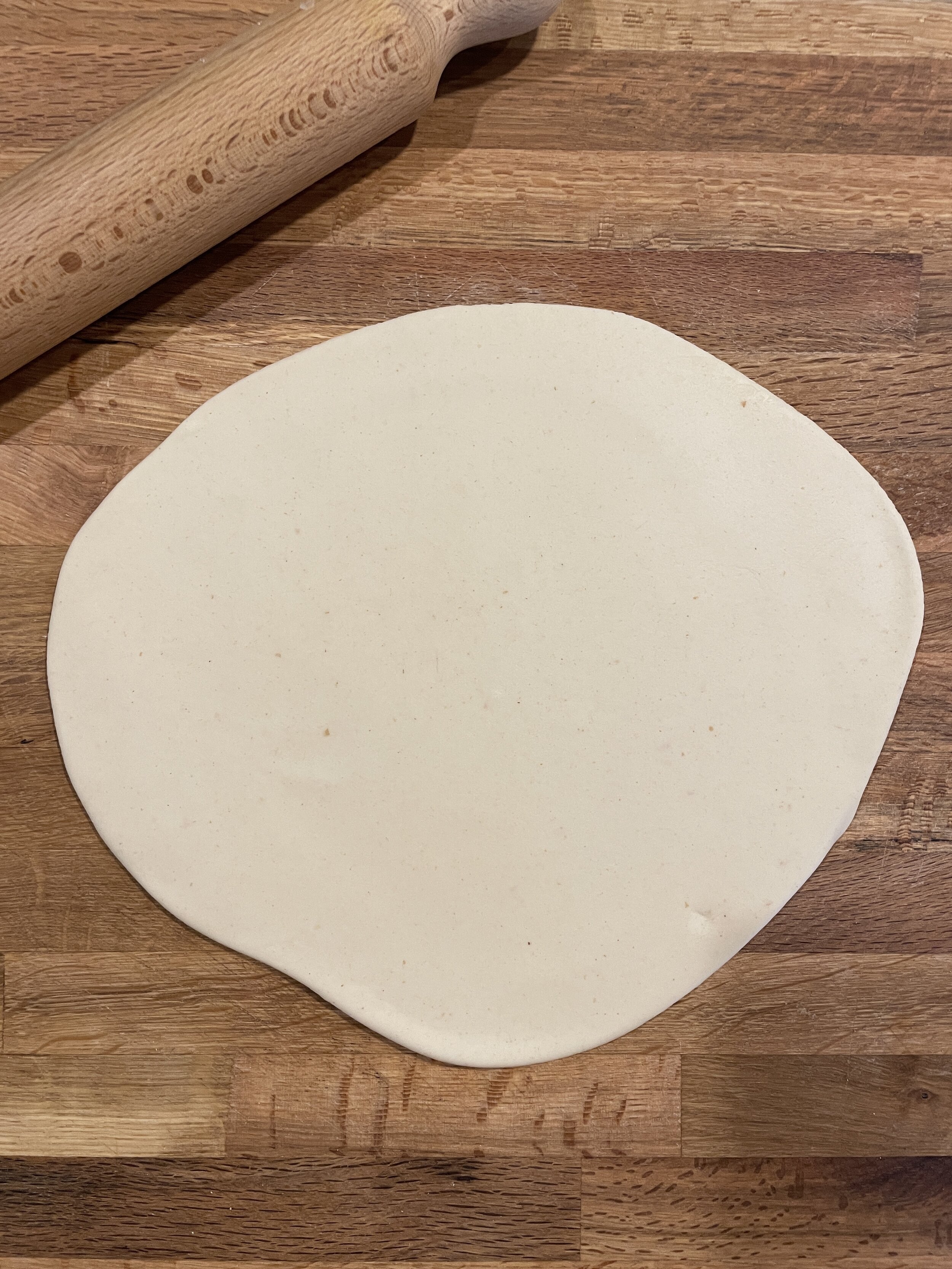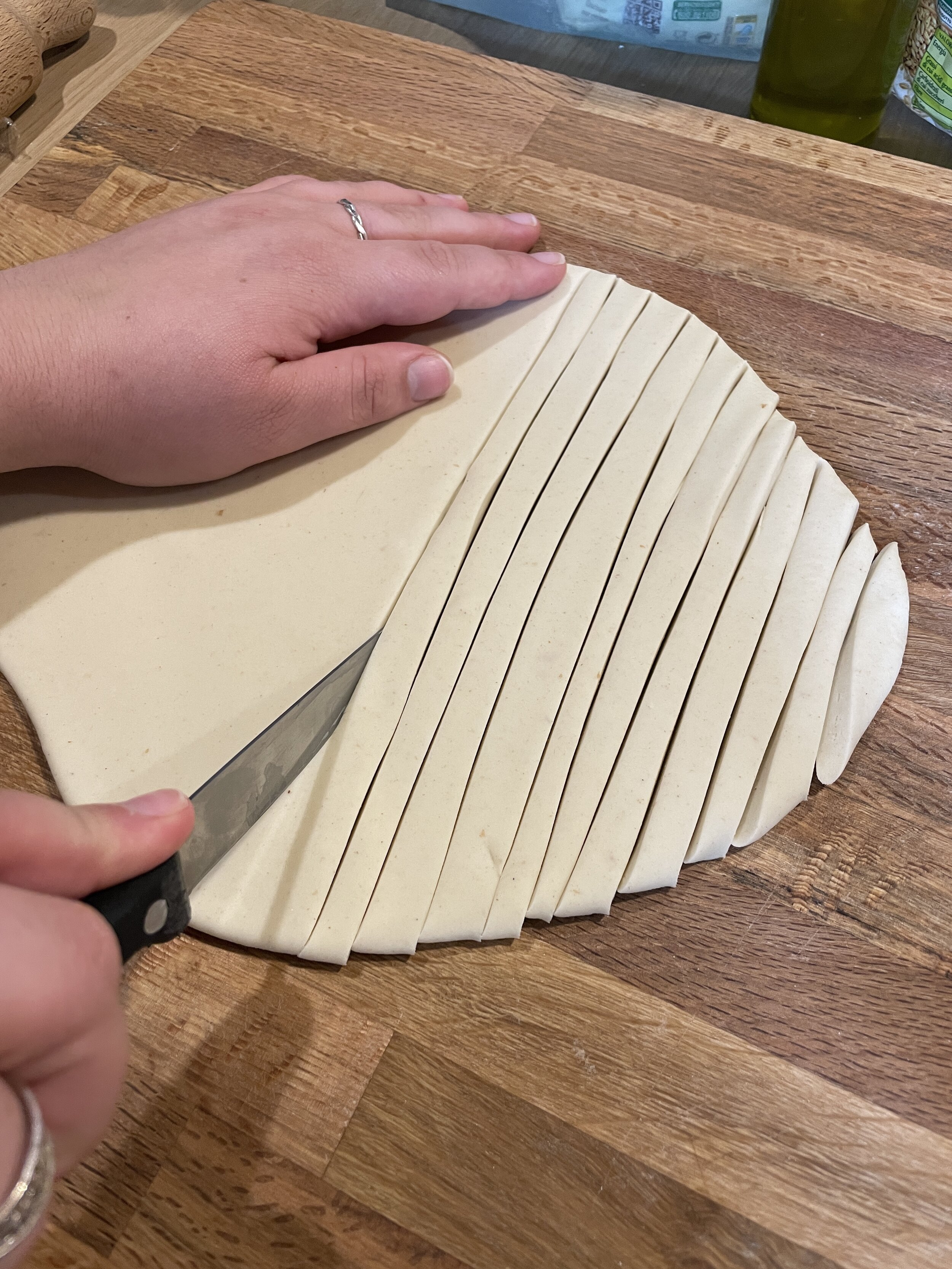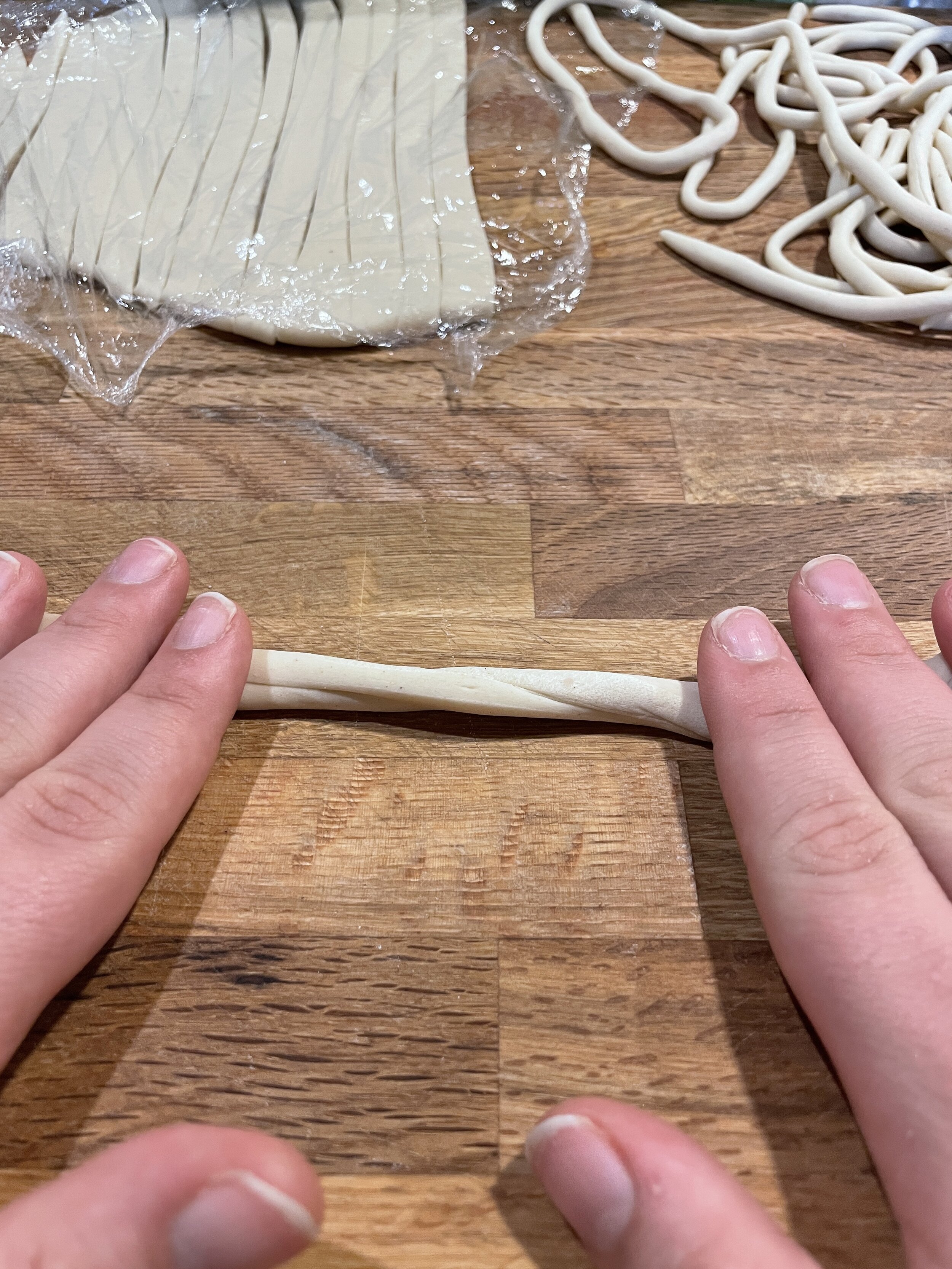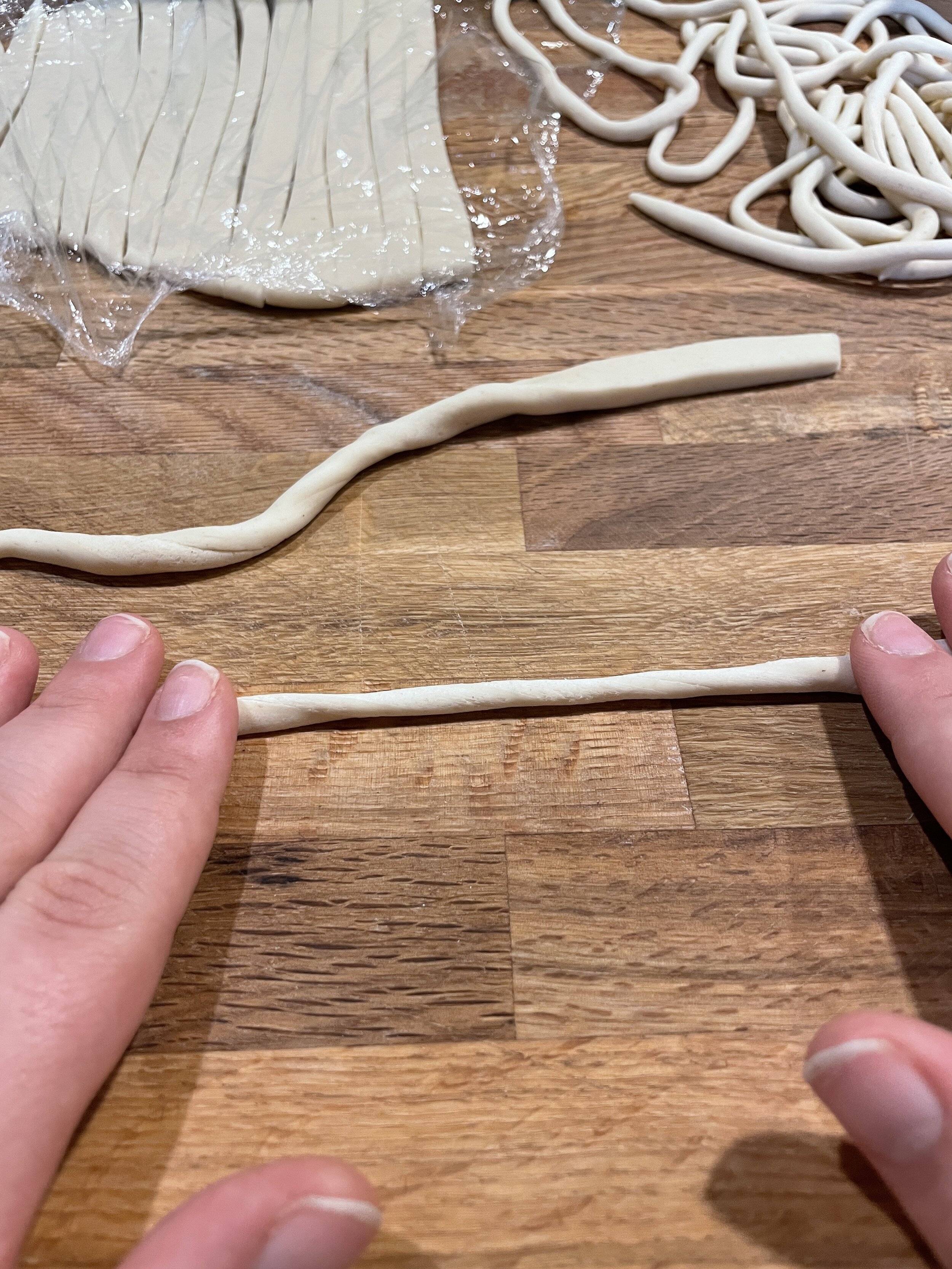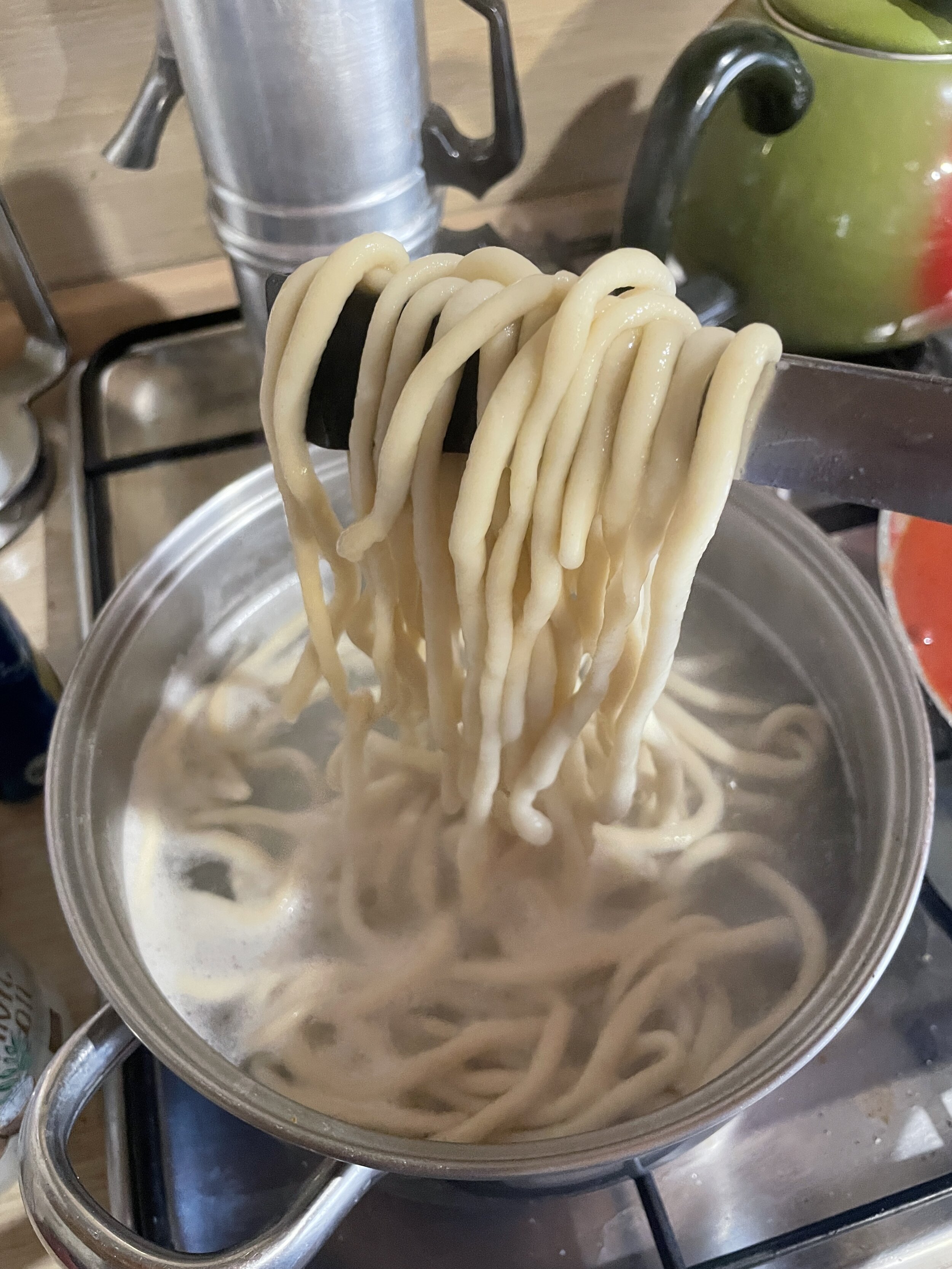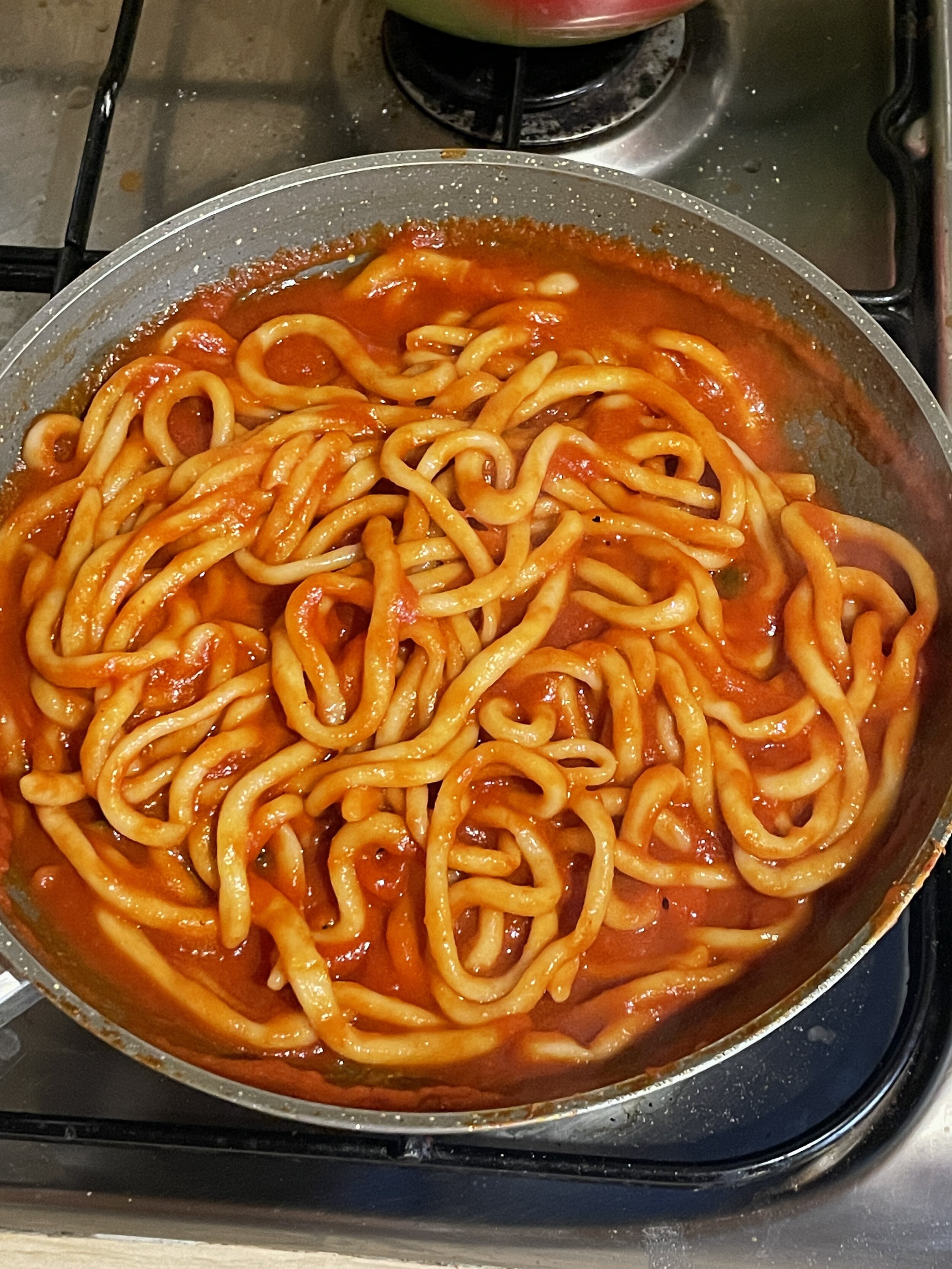Pici
Pici! Probably the easiest type of pasta to make from scratch. They are a Tuscan type of hand-rolled spaghetti, traditionally made with just water and flour, but sometimes with the addition of egg. There's no preoccupation with uniformity or perfection, making pici a laidback, rustic pasta that can be made in no time at all.
Pici can be found tradionally paired with a variety of sauces - with wild boar ragù; cheesy cacio e pepe; alle briciole (with breadcrumbs, seasoned and toasted in olive oil); or my favorite way, the classic pici all'aglione.
Pici served all’aglione are in a garlicky tomato sauce, which traditionally requires a special type of garlic, aglione di Valdichiana, a variety marked by its large bulbs, mild flavor, and easy digestibility.
Aglione can be impossible to find outside parts of Tuscany, so I often just serve my pici with a tomato sauce made with the most mild garlic I can find.
In this particular case, I was searching for a way to use up some extra stracciatella, a pugliese cheese made of soft cheese shreds soaked in cream. Stracciatella cuts perfectly through tomato-based sauces, so I knew pici were the way to go.
To make the pici you will need:
200g 0 flour
100g farina di semola rimacinata di grano duro
150g warm water
extra-virgin olive oil
**A few notes on the flours - be sure to use type 0, not 00 flour. Pasta made with 00 flour is usually done with egg, which gives the dough some structure. However, since these pici are made with just water, 00 flour is too low in protein to give the pasta a good, chewy texture. Type 0 flour is slightly stronger, and really makes all the difference in the end product. I choose to add in a bit of semola flour for the same reason, but you could alternatively just use 300g of type 0 flour. If you do this, pay attention to how much water you add, and make sure you knead the dough long enough to develop its strength.
Start by making the dough using the flour(s) and water and the traditional well method. While the dough is resting, you can make your sauce. Ingredients can be eye-balled. I generally heat a few cloves of garlic in some olive oil over a low flame until they have softened. Then add in around 500g tomato passata or crushed tomatoes, salt, a handful of fresh basil, and optionally, a few chili flakes. Cover and let cook over a low heat until everything comes together and the sauce reduces and sweetens a bit.
When you are ready to make your pici, flatten the dough ball a bit with your hands. Brush both sides with some extra-virgin olive oil. Roll out the dough with a pin until it is around .25in/6mm thick. Cut strips, and then roll them out by hand against a wooden board until they are thinner than a pencil. I sometimes cover my dough with a towel or plastic wrap as I work, to keep it hydrated. Be sure to not make your pici too thick, especially as they will grow in size when cooked. If needed, you can dust the finished pici with some flour to keep them from sticking.
Cook the pici in plenty of salted water, then transfer them to cook for a minute or so in the finished sauce.
You can serve the pici in just the sauce, or you can top with some stracciatella, like I did.
Enjoy!




